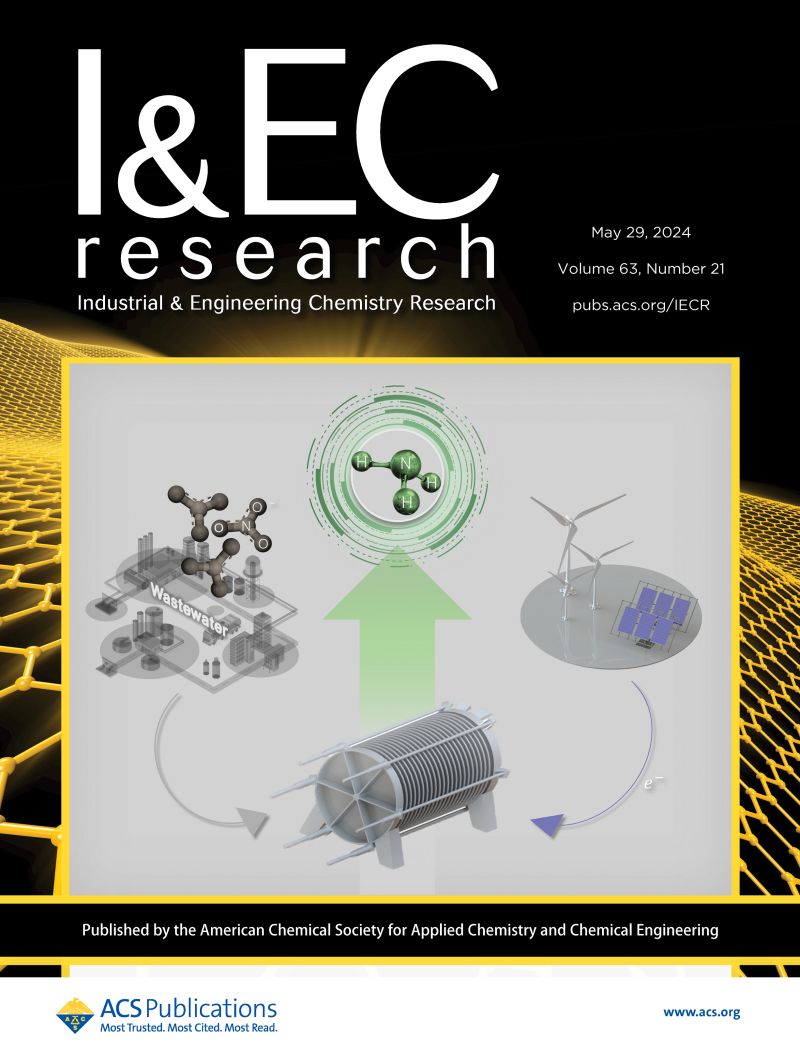Reaction Characteristics and Kinetics of Allyl Chloride Epoxidation Catalyzed by Supported Titanium Silicalite-1 in a Fixed-Bed Reactor
IF 3.8
3区 工程技术
Q2 ENGINEERING, CHEMICAL
引用次数: 0
Abstract
The direct epoxidation of allyl chloride (ALC) to produce epichlorohydrin as a green and sustainable production technology is gaining global attention due to the significant reduction in wastewater and residues compared to traditional methods. This study conducted epoxidation experiments of ALC in a fixed-bed reactor using a titanium silicalite-1 supported catalyst to reveal the catalytic characteristics and kinetics. The effects of the operating conditions on the reaction performance are studied using the single-factor variable method. The results indicate that decreasing the liquid hourly space velocity, increasing the temperature, solvent amount, and feed ratio influence the reaction rates of the main epoxidation reaction and the side ring-opening reaction, leading to the tendency of increasing hydrogen peroxide (HP) conversion and decreasing epichlorohydrin selectivity. The optimal HP conversion and epichlorohydrin selectivity reached 96.34% and 95.88%, respectively. Based on the Eley–Rideal and Langmuir–Hinshelwood mechanism, kinetic modeling of the surface reaction as a rate-controlling step is constructed. Under the condition of eliminating external and internal diffusion limitations, kinetic data reflecting the intrinsic catalytic reaction rate are measured. The predicted reaction rates based on the Eley–Rideal model with HP being adsorbed show good agreement with the experimental data and accurately describe the intrinsic kinetic behavior of ALC epoxidation. This work provides theoretical support for the design and optimization of reactors for the direct epoxidation of ALC, thereby promoting the development and application of environmentally friendly production processes.

负载型硅酸钛-1在固定床反应器中催化氯丙烯环氧化反应特性及动力学
丙烯氯直接环氧化法生产环氧氯丙烷是一种绿色可持续的生产技术,与传统的生产方法相比,其废水和残留物的减少显著,正受到全球的关注。本研究在固定床反应器中使用钛硅酸盐-1负载催化剂对ALC进行了环氧化实验,揭示了催化特性和动力学。采用单因素变量法研究了操作条件对反应性能的影响。结果表明,降低液时空速、提高温度、溶剂用量和进料比均会影响主环氧化反应和侧开环反应的反应速率,导致双氧水转化率升高,环氧氯丙烷选择性降低。最佳HP转化率为96.34%,环氧氯丙烷选择性为95.88%。基于Eley-Rideal和Langmuir-Hinshelwood机理,建立了作为速率控制步骤的表面反应动力学模型。在消除内外扩散限制的条件下,测量反映本征催化反应速率的动力学数据。吸附HP的eely - rideal模型预测的反应速率与实验数据吻合较好,准确地描述了ALC环氧化反应的本征动力学行为。本研究为ALC直接环氧化反应器的设计与优化提供了理论支持,从而促进了环保生产工艺的开发与应用。
本文章由计算机程序翻译,如有差异,请以英文原文为准。
求助全文
约1分钟内获得全文
求助全文
来源期刊

Industrial & Engineering Chemistry Research
工程技术-工程:化工
CiteScore
7.40
自引率
7.10%
发文量
1467
审稿时长
2.8 months
期刊介绍:
ndustrial & Engineering Chemistry, with variations in title and format, has been published since 1909 by the American Chemical Society. Industrial & Engineering Chemistry Research is a weekly publication that reports industrial and academic research in the broad fields of applied chemistry and chemical engineering with special focus on fundamentals, processes, and products.
 求助内容:
求助内容: 应助结果提醒方式:
应助结果提醒方式:


